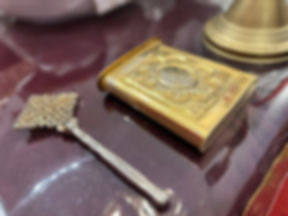
COPTIC FEASTS
Palm Sunday

One of the seven major feasts, and one of the most popular feasts among the Copts, Palm Sunday occurs on the seventh Sunday of Lent and has been celebrated by the Coptic church from early Christian times, to commemorate the entry of our Lord Christ into Jerusalem. This feast begins the Holy Week journey as Christ returned to Jerusalem from Bethany in preparation for His own crucifixion.
Historically, Copts would decorate their churches from the eve of the feast, carrying with them palm branches in the shapes of crosses, donkeys, and other shapes, decorated with olive twigs and flowers. Because of Christ’s triumphant entry into Jerusalem as King on Palm Sunday, palm branches became a symbol of triumph among Copts. Therefore, in Coptic iconography palm branches are often drawn into the hands of martyrs to denote their triumph.
The use of palm branches was an ancient tradition used on the Jewish Festival of Tabernacles, as they were commanded in Leviticus, “Take for yourselves ... the fronds of palm trees and rejoice before Jehovah your God seven days.” They waved the palm branches as they processed through Jerusalem and the temple while reciting parts from Psalm 118 including “Save us, we beseech you, O Lord.” In Hebrew, the word hosanna means ‘save us’.
In the early centuries of Coptic history, a special procession is said to have been conducted outside the church, throughout the city or town, in observance of Palm Sunday. This procession was headed by the clergy and followed by the community of the faithful. This tradition remained in practice in Egypt until it was forbidden by the Fatimid caliph al-Hakim at the turn of the tenth century.
Basilios, Archbishop. “Feasts, Major.” Claremont Coptic Encyclopedia, Claremont Graduate University. School of Religion, 1991



